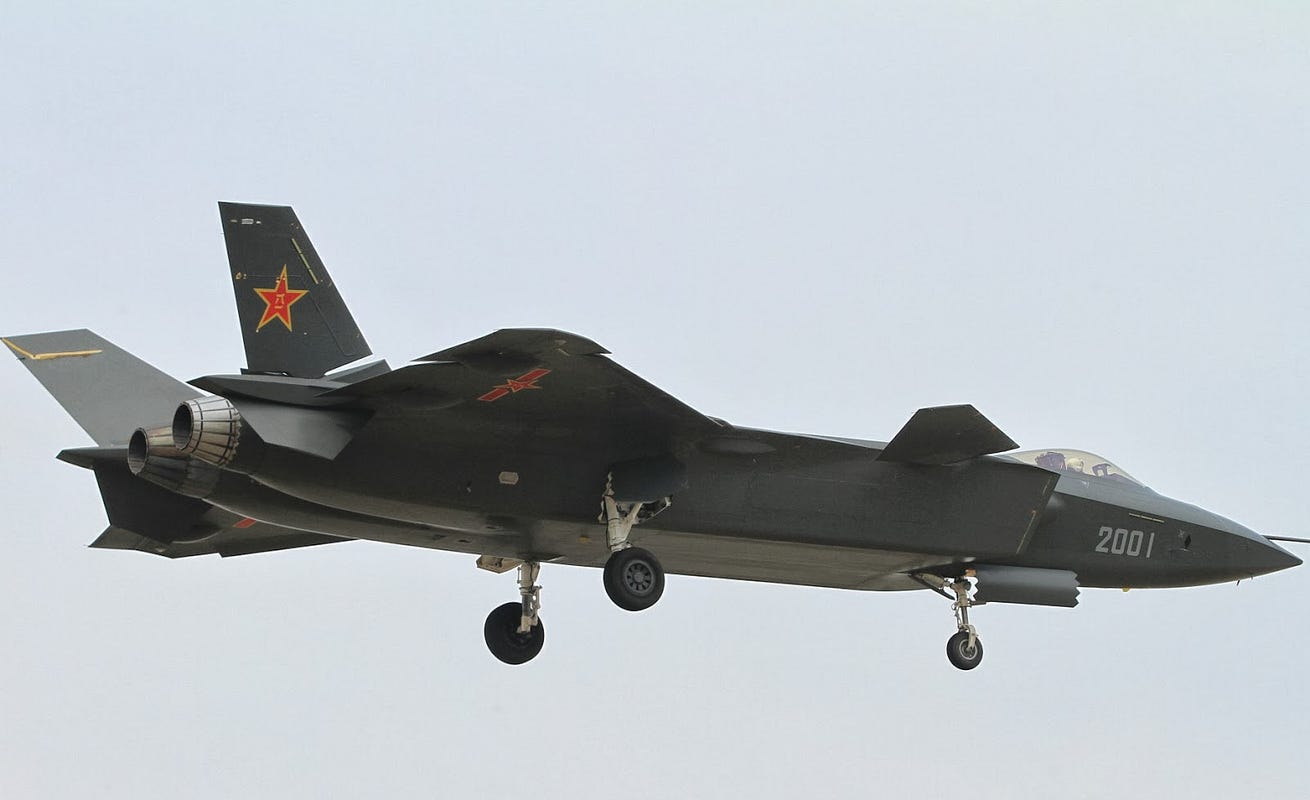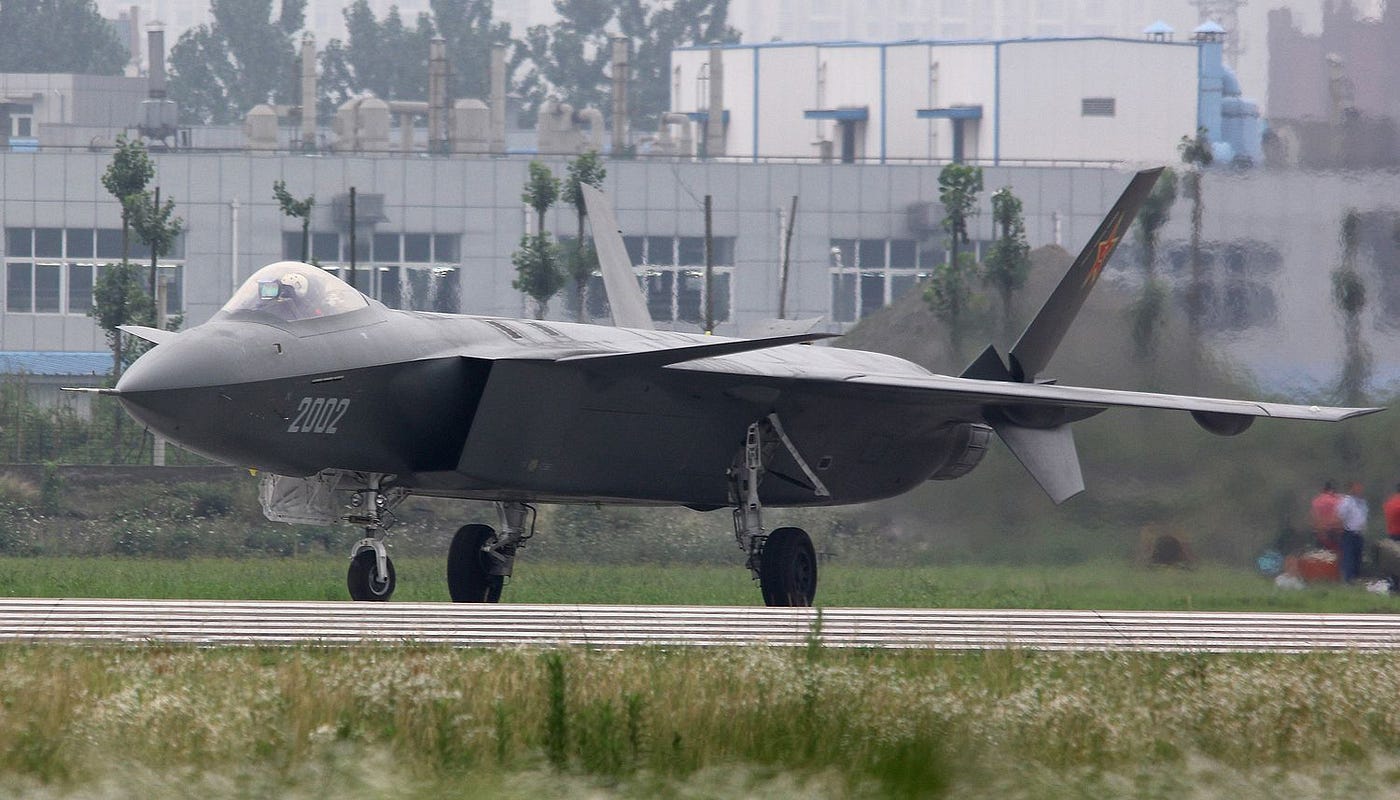The third—or maybe fourth—copy of China’s first stealth fighter design has appeared in photos published on the Chinese Internet. The Chengdu J-20 Dragon with the nose number “2011" appears to boast several important improvements and marks Beijing’s continued march towards an operational radar-evading warplane.
In other words, this new J-20 is a big deal—and comes hard on the heels of several other major aerospace advancements in China, including the first public flights of the new J-16 fighter-bomber and a potentially weapons-armed jet drone.

The J-20 first appeared in photos leaked online—most likely by bloggers on the Chinese Communist Party payroll—in late December 2010. The large, twin-engine fighter prototype with the nose number “2001,” painted a sinister black, first flew in January 2011, commencing a slow but steady test program.
International reaction to China’s first stealth warplane, albeit in prototype form, ranged from panicked to dismissive. “Asian Pacific’s political landscape will be changed,” claimed Arthur Ding, a Taiwanese analyst. But Chinese Air Force Gen. Chen Bingde admitted that there was a “gaping gap” between the J-20 and U.S.-made stealth warplanes including the F-22 and F-35.

Chengdu added another J-20—nose number “2002” to the test fleet in May 2012. In October, a possible third aircraft numbered “2003” appeared, but some analysts speculated that 2003 was actually just 2002 with modifications to its nose radome in order to accommodate a new, electronically-scanned radar. 2003 also appeared to have a fittings on top of the radome for an infrared sensor.
So far, the J-20s have used Russian-made AL-31F and Chinese WS-10 engines. A new, purpose-built engine for the J-20 is reportedly in development.

2011 appears to share 2003’s new radome but omits the top fitting for the IR sensor. Instead, 2003 has a housing below its nose for what seems to be an electro-optical sensor—basically, a powerful camera. A key piece of equipment on the U.S. F-35, an EO sensor allows a stealth fighter to detect targets at long range without resorting to radar, which can be picked up by the enemy.
It’s worth noting that EO and IR are not mutually exclusive—the F-35’s camera also includes an infrared function.

In addition to the camera housing, J-20 2011 appears to feature a metallic stealth coating, giving it the same characteristic sheen as the F-22 and F-35. Stealth paints and coatings, made of materials that can absorb radar and infrared energy, are key aspects of stealth design but are notoriously difficult to formulate, manufacture and maintain.
The coatings can also be wickedly toxic, although it’s unlikely Beijing will worry overmuch about that.
Just because the new J-20 appears to have a stealth coating does not mean the coating works or is economical. Still, the new prototype’s appearance is a triumph for Chengdu and the Chinese Air Force and brings Beijing that much closer to fielding combat-ready stealth fighters, perhaps as early as 2017, according to some projections.
But China still lags far behind the U.S. when it comes to cutting-edge warplanes. The U.S. Air Force already possesses 20 B-2 stealth bombers plus more than 180 F-22s. The Americans also have around 100 F-35s for tests and training and could deploy those new fighters, warts and all, within two years.
Russia and Japan are also developing radar-evading fighters. The RussianSukhoi T-50 first flew in early 2010. Five T-50 prototypes are in testing and Moscow hopes to purchase 60 front-line examples after 2016. Japan’sShinshin stealth fighter is still in the early design phase and, as Tokyo is also purchasing F-35s, might never enter serial production.medium.com
No comments:
Post a Comment